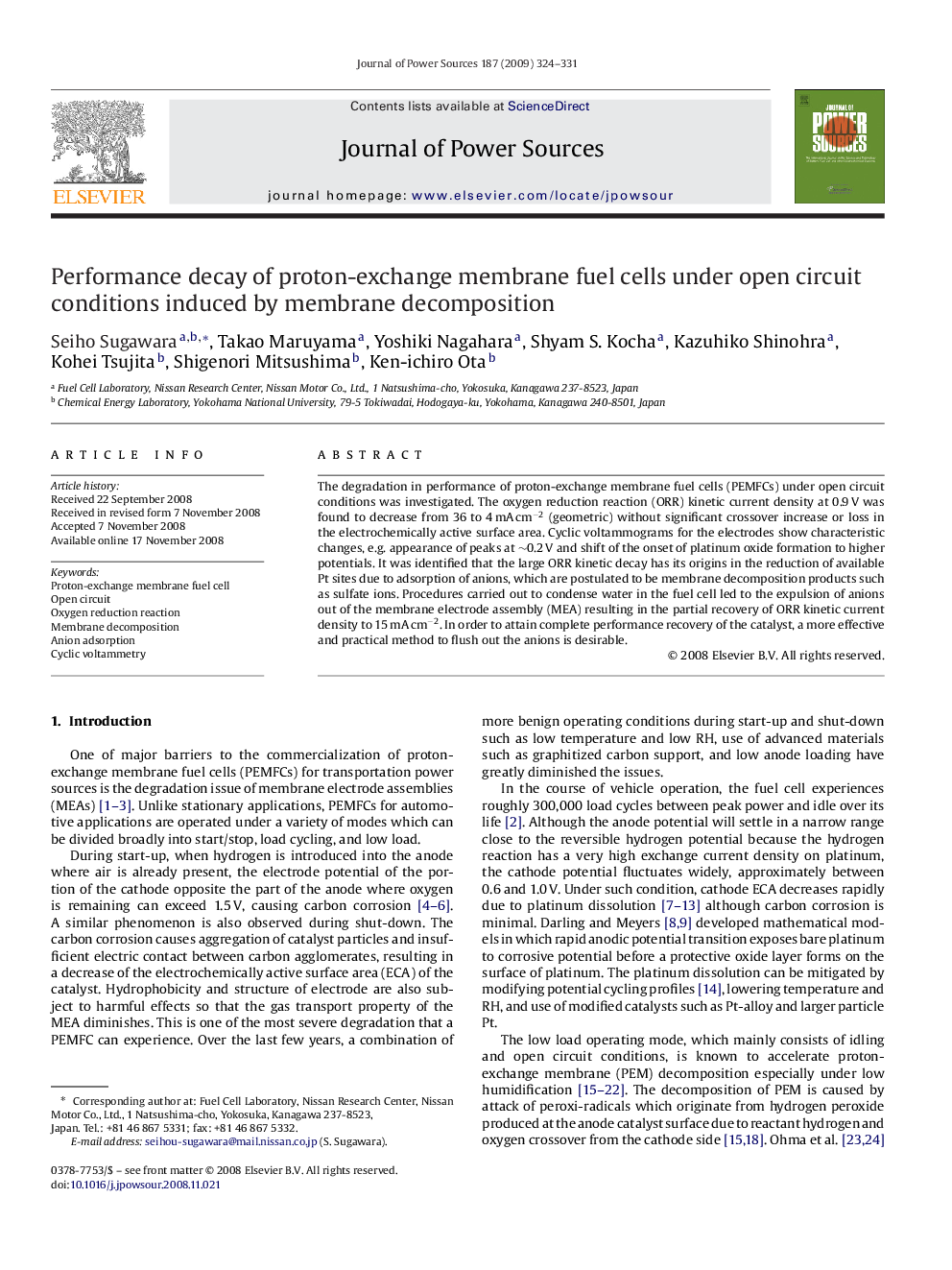| Article ID | Journal | Published Year | Pages | File Type |
|---|---|---|---|---|
| 1285229 | Journal of Power Sources | 2009 | 8 Pages |
The degradation in performance of proton-exchange membrane fuel cells (PEMFCs) under open circuit conditions was investigated. The oxygen reduction reaction (ORR) kinetic current density at 0.9 V was found to decrease from 36 to 4 mA cm−2 (geometric) without significant crossover increase or loss in the electrochemically active surface area. Cyclic voltammograms for the electrodes show characteristic changes, e.g. appearance of peaks at ∼0.2 V and shift of the onset of platinum oxide formation to higher potentials. It was identified that the large ORR kinetic decay has its origins in the reduction of available Pt sites due to adsorption of anions, which are postulated to be membrane decomposition products such as sulfate ions. Procedures carried out to condense water in the fuel cell led to the expulsion of anions out of the membrane electrode assembly (MEA) resulting in the partial recovery of ORR kinetic current density to 15 mA cm−2. In order to attain complete performance recovery of the catalyst, a more effective and practical method to flush out the anions is desirable.
